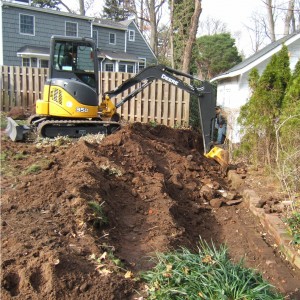How to Build a Garden Drainage System

Most homeowners understand the importance of having a proper drainage system for their garden or yard. Having water accumulate in your garden can cause quite a lot of damage to the vegetation and soil. Also, having stagnant pools of water is never a good thing as it attracts unwanted insects like mosquitoes. Building a garden drainage system can be a little challenging but with a decent plan and a little patience you can easily get the job done.
Things Required:
– Drainage pipes
– Topsoil
– Shovel
– Backhoe
– Small stones or gravel
– Large rocks
Instructions
-
1
Build a soakway
The first thing that you will want to do is to build a soakway that will collect all the water for the drainage system. This soakway should be built somewhere that is low and near the edge of your yard or garden. You will want to use the backhoe to make the soakway 6 feet wide and 6 feet deep. If you do not want to use the backhoe yourself, hire a professional to do it for you -
2
Create pooling area
Once you have created your soakway, you should dig a pooling area using the shovel or backhoe. You will want to connect this pooling area to the soakway to ensure proper drainage to areas that usually get soaked. The pooling ditch should be around 15 inches deep and 6 inches wide. It is very important to make sure that the ditch slopes downward at the proper angle. Usually you can use 1 cm per meter of the length as a guideline for the slope. -
3
Layer rocks in soakway
Make sure to place the large rocks and stones 5 feet deep in the soakway. After you have placed the large rocks, make a layer of smaller stones and gravel on top. It is best to keep this top layer around 6 inches deep. -
4
Place pipes
Once you have completed layering the large and small rocks in the soakway, you can go ahead to place the drainage pipes. Ensure that each pipe is properly connected to avoid any possible leaks. You can use the shovel to completely cover the pipes with soil. Leave an area around 1 to 2 feet uncovered to help with drainage. -
5
Fix problem areas
Identify the various problem areas and dig down to the drainage pipes. Make sure to cover the area with rocks to avoid any topsoil clogging up the pipes. -
6
Cover with topsoil
Once completed, you can cover the entire soakway with some topsoil to hide the drainage system.







